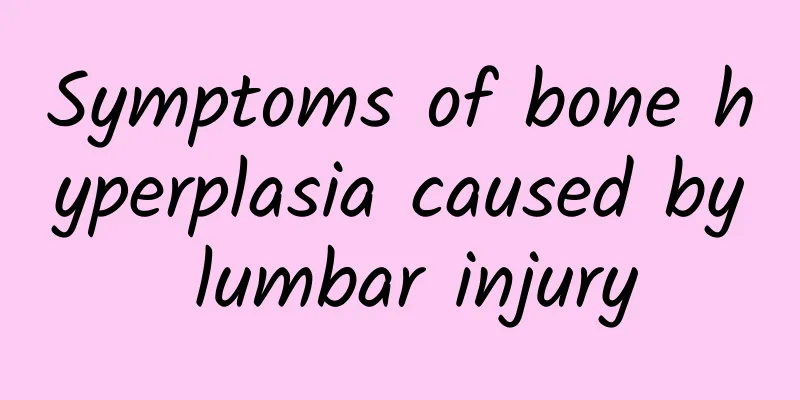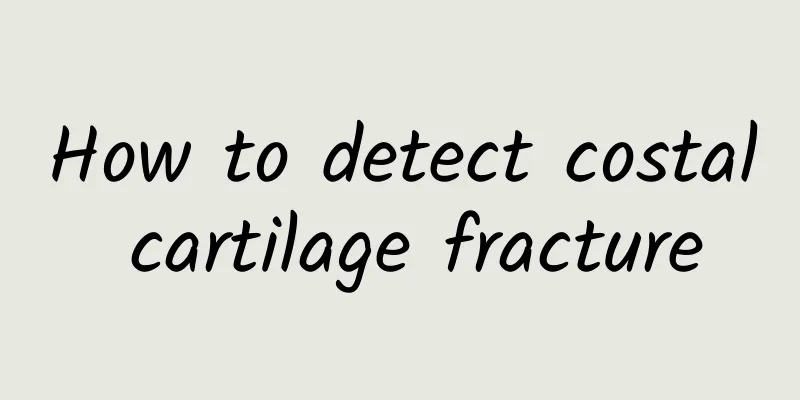Symptoms of bone hyperplasia caused by lumbar injury

|
Lumbar spine injury may induce symptoms of bone hyperplasia, including low back pain, limited mobility, nerve compression, etc., which may affect the quality of life in severe cases. The main causes include joint surface wear caused by external force, the formation of osteophytes during the repair process, and the inflammatory response of surrounding tissues. Treatment can be drug control, physical therapy and surgical intervention. 1) Causes of bone hyperplasia caused by lumbar injury Lumbar spine injuries are mostly caused by falls, sports injuries or long-term strain. After external injury, the human bone tissue will start self-repair. When the repair process is repeated or excessive, osteophytes will form, which manifests as bone hyperplasia. After the lumbar vertebrae articular surface is damaged, the burden increases, and the wear of the intervertebral disc and soft tissue increases, further promoting abnormal bone proliferation. Inflammatory response is also one of the triggering factors. Local inflammation after injury may induce abnormal activity of osteoblasts and gradual growth of osteophytes. Age is also a risk factor. Middle-aged and elderly people are more likely to show bone hyperplasia on the basis of weakened bone repair ability. 2) Common symptoms of lumbar vertebrae bone hyperplasia The most common symptom is low back pain, which may be recurrent dull pain or intermittent severe pain, which is aggravated by prolonged sitting or bending. Bone spurs compressing nerve roots may cause numbness, weakness, and even shooting pain in the legs. Severe hyperplasia may affect spinal mobility, causing stiffness in the waist and limited mobility. Some patients may experience swelling, soreness, or a foreign body sensation around the lumbar spine due to local inflammation. If there is a significant impairment of neurological function, it may jeopardize the ability to walk and stand daily, and medical attention should be sought as soon as possible. 3) Treatment methods and life management -Drug treatment: Nonsteroidal anti-inflammatory drugs (such as ibuprofen) can be used to relieve pain and control inflammation. If symptoms are severe, local steroid injections can be given under the guidance of a doctor. Analgesics such as opioids are suitable for short-term severe pain. -Physical therapy: hot compress, traction, massage, etc. can relieve muscle tension and pain and improve mobility; rehabilitation training can improve lumbar stability and support, such as practicing core muscles and stretching movements (such as Pilates or back stretching exercises). -Surgical treatment: If the nerve compression symptoms caused by bone hyperplasia cannot be relieved by conservative treatment, minimally invasive decompression or transforaminal endoscopic surgery can be selected to remove the diseased osteophytes and relieve the symptoms. In severe cases, intervertebral fusion surgery can be considered. 4) Prevention and adjustment in daily life Maintain a correct sitting and standing posture, avoid excessive bending and sitting for long periods of time; pay attention to the combination of work and rest at work, and use a waist protector to protect the lumbar spine. Follow scientific training principles during exercise to avoid injuries, and strengthen the training of the waist and back muscles to improve spinal stability. Pay attention to supplementing calcium, vitamin D and other nutrients in the diet, such as dairy products, fish, and dark green vegetables, which are good for bone health. Symptoms of bone hyperplasia caused by lumbar spine injury should be treated with caution. If the pain or dysfunction is severe, it is recommended to seek medical attention as soon as possible for a clear diagnosis and treatment. Through medication, physical therapy and appropriate surgical intervention, combined with scientific life management and rehabilitation training, symptoms can be effectively alleviated and the stability and function of the lumbar spine can be improved. |
<<: Does intestinal obstruction affect pregnancy?
>>: Are there obvious symptoms of brain aneurysm bleeding?
Recommend
Can three movements cure cervical spondylosis?
Cervical spondylosis is a common health problem a...
Which department should I go to for examination of gallbladder polyps?
Gallbladder polyps usually require examination an...
What causes cystitis in children and how to treat it
Cystitis is relatively uncommon in children, but ...
Does right nasal bone fracture need treatment?
The right nasal bone fracture requires treatment,...
How to check for ventricular septal defect?
Ventricular septal defect is usually initially di...
What is bone hyperplasia?
Bone hyperplasia is caused by the degeneration an...
Benefits of elevating your feet
Elevating your feet is a simple yet extremely eff...
Will perianal abscess definitely lead to anal fistula?
Perianal abscesses do not necessarily lead to ana...
The number one nemesis of cystitis
The key to treating cystitis lies in anti-infecti...
Can exercise improve urethritis?
Patients with urethritis can improve their sympto...
What fish and shrimp can I eat if I have breast cysts?
Patients with breast cysts can eat moderate amoun...
How to treat cerebral vasospasm effectively
The treatment of cerebral vasospasm can achieve g...
What medicine should I take for breast cysts?
Breast cysts generally do not require specific me...
What causes intestinal polyps
Treatments for intestinal polyps include endoscop...
How to correct X-shaped legs
X-shaped legs are medically known as knock knees,...









